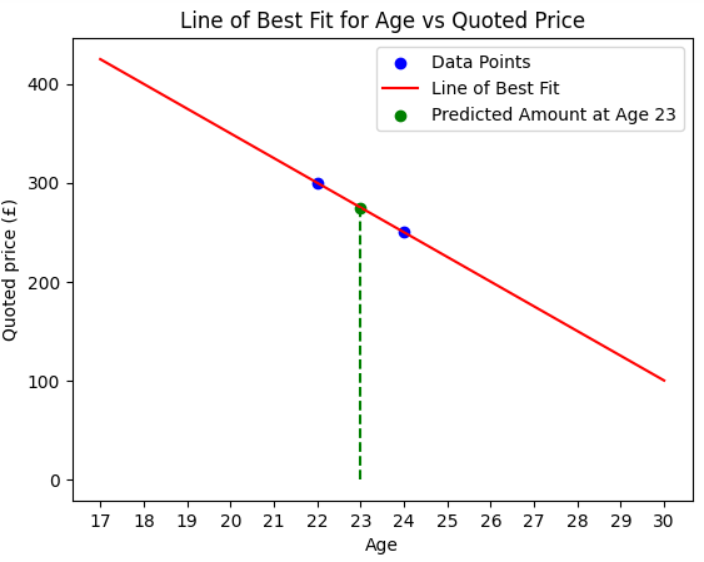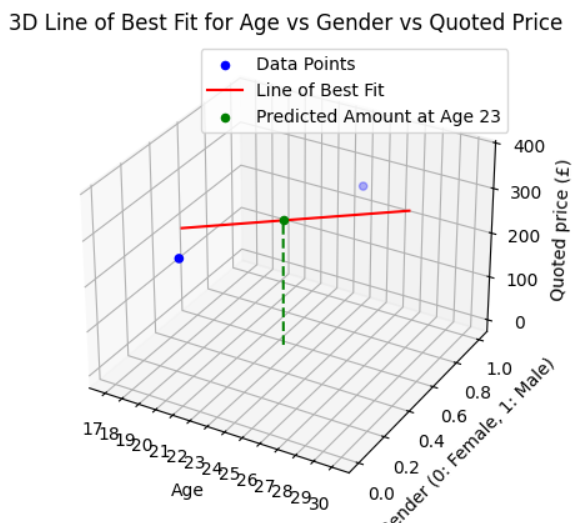Decoding AI Buzzwords
Introduction to AI Buzzwords
As the AI trend continues, AI buzzwords are being thrown around increasingly. But what does AI mean? Loosely, everyone understands it as some kind of clever programming that can process lots of data quickly and mimic human behaviour. For example, with Co-pilot we can chat to AI like a real person. This understanding is fine for most day-to-day conversations. But when we’re talking about what AI can do for you and your business, I think it’s necessary to be a bit more precise so that you know what you’re asking businesses to deliver.
Definitions for all AI buzzwords can be argued – no authority defines where to draw the line between different terms. The definitions provided in this blog are Daisy’s own opinion, but Daisy has worked as a data science consultant for the past year and has a master’s degree in computer science, so these definitions are not completely made up – promise! If you disagree with anything, send Daisy an email and let her know!
Buzzword #1: AI
AI is an umbrella buzzword for technology mimicking humans. It doesn’t necessarily mean ‘talking’ like humans, but maybe mimicking how humans make decisions or even just a task that previously required a human.
Navigating the AI landscape can be tough but the simplest form of AI is one that uses a knowledge base to appear human. As a really simple example, your team may internally hold the knowledge that men under 25 should be quoted £300 for car insurance and men over 25 should be quoted £200. For women, they are quoted as £250 and £175 respectively. Every time you have a new starter, you pass on this knowledge to them. To save time training people, you decide to add this information to a knowledge base. The knowledge base could be as simple as a table in Excel. Your team now has a reference point for these values/rules.
Over time, you will end up with loads of rules about pricing stored in this table, and it might get difficult for your team to read the knowledge base quickly. Here, you can implement AI to speed it up. This can be a function that your team can input age and gender into, and it will read the table and tell them the quote to give the customer. Normally, your team would need a person to make the decision on what quote to give. Now you have a function that can perform the same task.
This is AI using a knowledge base. It feels like cheating a little because it’s not really ‘thinking’ or ‘learning’ – we taught it everything it knows explicitly. That’s why it’s called a simple form of AI: it simply copies a human task without a lot of intelligence.
A limitation of this form of AI is that it’s very rigid to the information you have fed it. If your knowledge base only has the knowledge that 22 year old’s are quoted £200 and 24 year old’s are quoted £250, then your AI would not be able to give you a quote for a 23 year old. Simply put – you never told it what to do in that scenario. So, for this type of AI, you have to give it all the information it needs for every scenario it might encounter.
Buzzword #2: Machine Learning
Within AI, there’s another buzzword called Machine Learning. Machine learning can be described as algorithms that pull trends from data – it’s all about patterns. So, using the last example, if your training dataset said 22 year old’s are quoted £200 and 24 year old’s are quoted £250, Machine Learning would indeed be able to give you a quote for a 23 year old. A machine learning algorithm doesn’t store the data as facts on their own; it learns how to model the data as a trend. The simplest trend type would be finding a line of best fit. See the graph below.

After you’ve got the line, you don’t need to keep referencing the data/table anymore. This is what people mean when they say the data has been modeled. The equation of the line is the model. NB: machine learning is described here as a line of best fit, but it’s important to note that this is a really simple way of trending data. Useful machine learning algorithms can dissect/trend data in unusual shapes and dimensions.
Another important part of the description of machine learning is that we have to give it the data that a human would need to make the decisions. For example, age and gender may be factors for car insurance quotes. So, if we want the machine learning algorithm to consider both age and gender in its decision, then we need to give it that information. It sounds obvious, but you’d be surprised how many people expect machine learning to be smart enough to just magically know things, even when their human counterparts wouldn’t be able to pull those insights without that data.
The more factors (or features) given to an ML algorithm, the more complex the model is. For example, age and quote price can be shown on a 2D axis like the graph above. But if we add gender to this, then we need a 3D axis (see below). To add another feature, you will need a 4D axis, which can’t be shown as a diagram! This is one element that makes machine learning so useful. It can find patterns in data points that span many dimensions, which a human would find difficult to do.

Buzzword #3: Data Science
This term probably has the loosest definition. It is often used synonymously with Machine Learning. It can also be defined as an encapsulation of the entire data life cycle. But, Daisy takes the ‘science’ part quite literally, defining data science as the experimental portion of developing AI. While physicists might scoff at the idea of calling this science, there’s great reasoning behind calling it that.
When developing AI to solve a business problem, chances are you won’t get it right the first time. It’s an agile process where you try out different features, and maybe even different algorithms, until you get it to a state you are happy with. Consider a hypothesis that outside temperature affects ice cream sales, therefore a good predictive model can be made for ice cream sale volumes based on temperature alone. But, after experimenting with data, your work might suggest that it’s more accurate if the time of year is used as a feature too. Think of a warm day in October – everyone doesn’t rush the ice cream van! It’s more of a summer thing. By using data science, models can be fine tuned and perfected.
Equally, the experiment can go the other way. The model can be given access to all of the data at the start, but it will perform at its best with only a few features. The insurance quote model from earlier can be given the features like age, gender, eye colour, date of birth, and favourite pet. However, you don’t need to run an experiment to say that eye colour and favourite pet should have no bearing on the quoted price, but you’d get the same result if you did. Not only this, age and date of birth trend exactly the same with price. You can remove one of them from the model to simplify it and speed it up. While that’s an obvious example, you can imagine that feature selection can get quite complex, and it’s worth taking the time to experiment to find the best model for your data.
Buzzword #4: Deep Learning
This is the inner buzzword of the AI/ML umbrellas – the really complex stuff. It’s the closest to what the general public currently refers to as AI. Defining deep learning can actually get quite complex (explaining things like neural networks). So, let’s keep it short by talking about some examples. Deep Learning algorithms tend to be used on complex data like images or for speech recognition. They are also used for things like Copilot, allowing you to have those really human-like conversations with AI. This type of Deep learning is called Generative AI.
These models generate new content and data similar to the data it was trained on. Copilot is trained on huge amounts of text, and that’s why it can mirror a conversation so well. But while Copilot is very clever, it is always going to be limited by the data it has been fed. That’s why it can’t always tell you much about current events because today’s news wasn’t in the training data 2 weeks ago.
Key Takeaways
Here are a few key takeaways explaining AI buzzwords:
- Chatbots like Copilot are a subset of Deep Learning, which is a subset of Machine Learning, which is subset of AI.
- Data science is the experimental part of developing AI.
- If you need your solution to follow strict rules to automate a task, you want a knowledge-base AI implementation.
- If you want to find trends in the data from tables, or automate a task a bit more intelligently, you want machine learning.
- If you need to analyse images or audio, or want your own Copilot-like implementation, you want deep learning.
Need help? We’re here!
By partnering with Simpson Associates, you will gain peace of mind with the reassurance that your AI implementation is in the hands of experienced professionals.
If you’d like to explore AI in your organisation further, or would like advice on any topics discussed in this blog, our experts are ready to assist you. Start a live chat now to discuss your specific needs and explore how we can help you unlock the full potential of your data.
Blog Author, Daisy Kennedy, Senior Consultant


